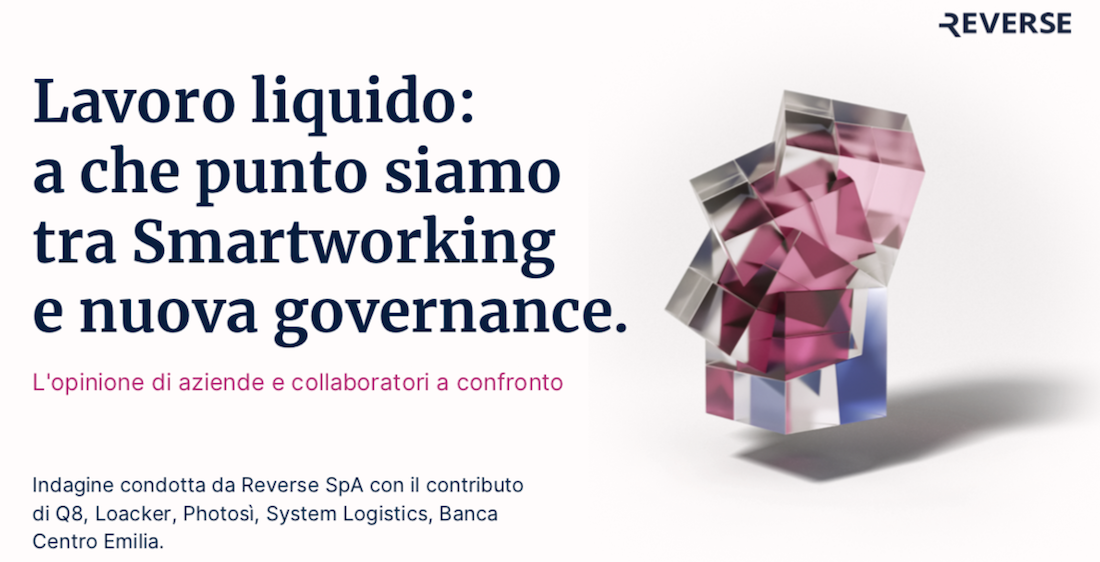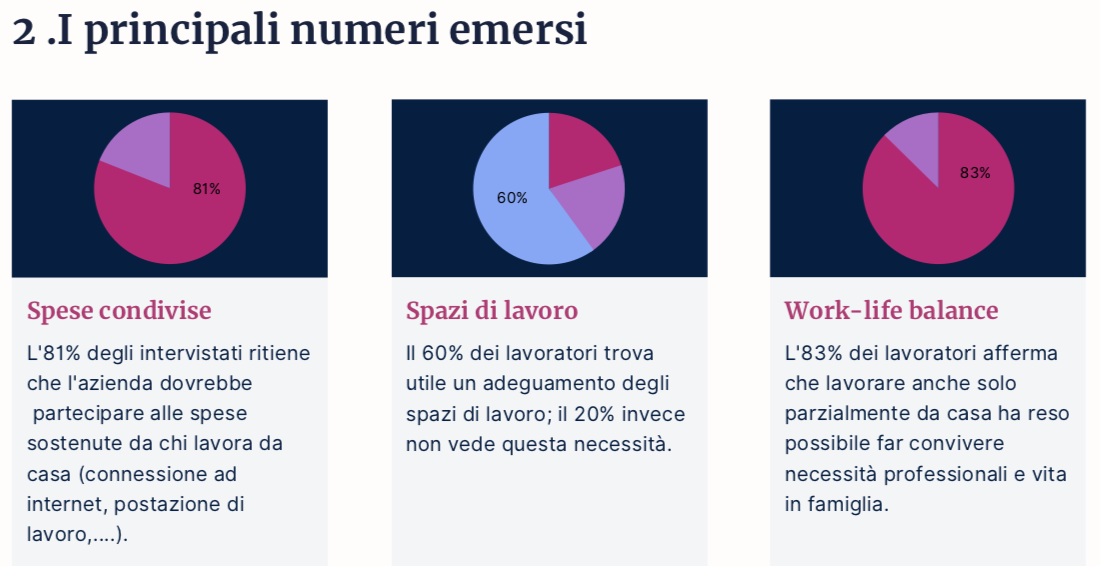
The survey ”Fluid Work between Smart Working and new governance” conducted by Reverse compares the opinions of workers and company management. The first data that emerges is that 75% of workers prefer hybrid work, the optimal solution for millennials and z generation between 20/30 years, but in general for all age groups of the interviewees.
The survey explores various areas (right to disconnect, work by objectives, training, workspaces, regulation) and indicates the next steps to follow: reorganization of work by objectives and the adoption of new methods of management and accountability of resources, rethinking of spaces and new methods of performance evaluation.
It cannot be ignored that 83% of workers appreciated that working even partially from home made the work-life balance possible.
The Reverse survey photographs the current situation, after two years of remote working imposed by the pandemic, with the aim of providing ideas for a common future direction.
Right to disconnect.
45% of workers say that, working from home for the past two years, they have suffered from increased demand for online availability.
Companies appear to be moving towards regulation.
The workplace.
60% of workers, of all age groups, declare the need to adapt spaces to the new ways of working.
The HR Managers agree, stating that companies are completely and rapidly changing the physical workplace layout by focusing on open space, laptops and desk sharing.
On the other hand, the positions regarding home working stations are in contrast.
80% of workers argue that the company should participate in the expenses incurred by those who work from home (internet connection, ergonomic workstation, etc.). While almost all companies do not plan to modify the contract by including a share in the costs for those who work in smart working.
Work by objectives.
This is a point that brings together workers and companies. 56% of workers say their company has rescheduled work on targets to make it easier to work remotely.
60% of HR Managers state that they have introduced ways of working with a fluid schedule.
Training courses.
On the topic of training, the perception between companies and workers is different.
For 82% of workers, with the introduction of smart working, the company should pay more attention to training courses.
While 90% of the companies interviewed state that they have set up specific training courses for employees.
Technology versus physical encounters.
Technologies have compensated for the decrease in personal contacts, as stated by 65% of workers.
And companies are trying to involve collaborators and keep in touch through online surveys to understand the degree of satisfaction, chat and online activities, even face-to-face events managed by the teams.
On this aspect, however, does not emerge from the survey the fundamental value of the informal physical encounter, even if difficult to quantify.
And perhaps the rethinking of the post-pandemic office should start precisely from this consideration, structuring the spaces to facilitate and stimulate these “fluid” moments that are a source of growth for the company and motivation for returning to the office for workers.



















